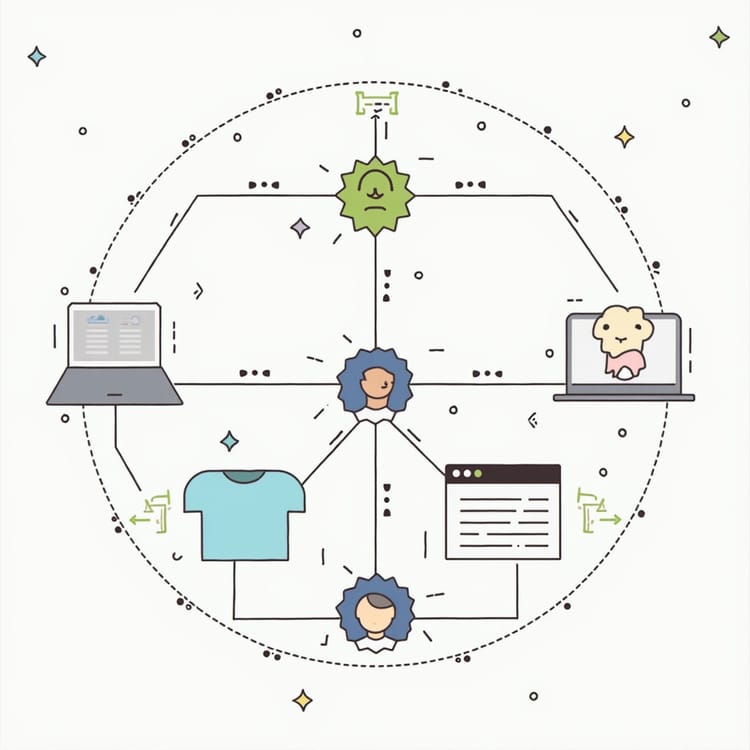Understanding Software Development Environments: From R&D to Production

In the world of software development, environments are the backbone of a robust development and deployment pipeline. They provide isolated spaces where teams can innovate, test, and release software systematically. Each environment serves a unique purpose and is critical in ensuring that applications are delivered with quality and reliability. This article explores the key environments used in software development—R&D, Alpha, Beta, Dev, Stage, and Production—and their roles in the lifecycle of a product.
1. Research & Development (R&D) Environment
The R&D environment is where innovation begins. It’s a playground for exploring new ideas, experimenting with technologies, and creating proof-of-concepts. This environment is often unstructured and may not adhere to rigorous standards, as its primary goal is to foster creativity and rapid prototyping.
- Purpose: Experimentation and innovation.
- Users: Developers, researchers, and architects.
- Characteristics:
- High flexibility and minimal restrictions.
- May use mock data or disconnected systems.
- Often isolated from other environments to avoid impacting ongoing development.
2. Development (Dev) Environment
The Dev environment is where active development takes place. Developers build features, fix bugs, and integrate components. This environment mirrors the application's architecture but may use lighter configurations and mock services for faster iteration.
- Purpose: Feature development and bug fixing.
- Users: Developers.
- Characteristics:
- Code changes are frequently deployed.
- Automated tests are run to catch immediate issues.
- May not use production-grade resources to reduce costs.
3. Alpha Environment
The Alpha environment is the first step in validating new features. It’s a controlled space for internal testing, where experimental features can be tested by internal teams or a small group of users.
- Purpose: Early testing of features and functionality.
- Users: Internal teams, QA, and sometimes power users.
- Characteristics:
- May contain incomplete or experimental features.
- Limited access and usage.
- Feedback collected for refining features before broader testing.
4. Beta Environment
The Beta environment is a replica of the production environment used for external testing. Features that have passed internal validation are deployed here to gather feedback from real users in controlled conditions.
- Purpose: External testing and user feedback collection.
- Users: Select group of external users.
- Characteristics:
- Closely mirrors production configurations.
- May use anonymized production data.
- Issues and feedback are used to refine features before production release.
5. Staging (Stage) Environment
The Staging environment is the final testing ground before production. It’s designed to be as identical to production as possible, enabling teams to validate the complete system under real-world conditions.
- Purpose: Final validation of features, performance, and integrations.
- Users: QA teams, product managers, and stakeholders.
- Characteristics:
- Mirrors production in architecture, data, and configurations.
- Comprehensive testing of end-to-end workflows.
- Used for regression testing and performance optimization.
6. Production (Prod) Environment
The Production environment is the live system used by end-users. This is where the application runs at full scale and serves real-world traffic. Reliability, security, and scalability are the highest priorities here.
- Purpose: Deliver services to end-users.
- Users: End-users, support teams, and operations teams.
- Characteristics:
- Fully secured and monitored.
- Zero tolerance for errors and downtime.
- Requires a robust incident management process.
Connecting the Environments
The journey from R&D to Production involves carefully moving code through these environments. Each step has its checks and balances to ensure quality:
- R&D: Ideas and prototypes are explored.
- Dev: Features are developed and unit tested.
- Alpha: Early-stage features are internally validated.
- Beta: Features are exposed to external users for feedback.
- Stage: The entire system is tested for production readiness.
- Production: Features are deployed for end-users.
Best Practices for Managing Environments
- Consistency: Use Infrastructure as Code (IaC) tools to ensure all environments are consistent and reproducible.
- Isolation: Keep environments isolated to avoid cross-contamination of data and configurations.
- Monitoring: Implement logging and monitoring in all environments to detect and address issues early.
- Automation: Use CI/CD pipelines to automate deployments, reducing errors and increasing efficiency.
- Data Security: Protect sensitive data, especially when using production-like data in lower environments.
Conclusion
Each environment in the software development lifecycle plays a vital role in delivering high-quality applications. By understanding and properly managing these environments, teams can ensure a smooth transition from innovation to delivery, while minimizing risks and maximizing user satisfaction. Whether you're experimenting in R&D or deploying to Production, having a clear strategy for each environment is key to successful software development.




